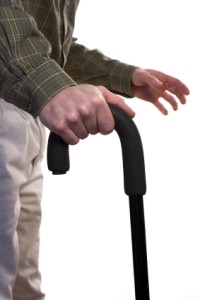Managing fear of falling in the elderly
Fear of falling is common among the elderly and can lead to social withdrawal, avoidance of daily activities and eventually loss of independence. New research suggests that a home-based cognitive behavioral program may be beneficial in managing concerns about falls in frail older people.
Researchers in the Netherlands conducted a randomized controlled trial involving 389 people aged 70 years and older. Participants were randomized to receive either a home-based, behavioral program consisting of seven sessions, including three home visits and four telephone contacts, or usual care.
 At twelve months follow up, the intervention group had significantly lower levels of concerns about falls, activity avoidance and disability compared to the control group. While no significant difference in total number of falls was noted between groups, the intervention group had significantly fewer indoor falls.
At twelve months follow up, the intervention group had significantly lower levels of concerns about falls, activity avoidance and disability compared to the control group. While no significant difference in total number of falls was noted between groups, the intervention group had significantly fewer indoor falls.
This research suggests that a home-based, individual program to help older people deal with fear of falling has the potential to prolong independent living and provide an alternative for those who are unable or unwilling to attend group programs.
Dorresteijn et al., BMC Geriatrics
Neuromuscular electrical stimulation in critically ill patients
Many patients staying in intensive care units (ICU) for more than a week develop muscle weakness. One proposed treatment for this is neuromuscular electrical stimulation (NMES). A new randomized controlled trial has found that NMES during ICU stay has no effect on muscle mass, but appears speed up recovery of muscle strength.
The researchers conducted a single-blind randomized controlled trial involving 54 critically ill patients admitted to ICU following cardiothoracic surgery. Patients were randomized to intervention or control groups. Both groups had NMES electrodes applied twice daily, seven days a week, for the entire ICU stay but for those in the control group no electricity was delivered.
In this study, NMES was found to have no effect on muscle layer thickness. At hospital discharge, all patients regained preoperative levels of muscle strength but patients in the intervention group regained muscle strength faster.
Fischer et al., Critical Care
Reducing transmission of P. falciparum malaria
 Infectiousness of carriers of the malaria causing parasite P. falciparum depends on the sexual stage of the parasite. For transmission to mosquitos to occur, parasites in the sexual stage (gametocytes) must be present in the carrier’s blood.
Infectiousness of carriers of the malaria causing parasite P. falciparum depends on the sexual stage of the parasite. For transmission to mosquitos to occur, parasites in the sexual stage (gametocytes) must be present in the carrier’s blood.
Artemisinin-based combination therapy (ACT), commonly used as first line treatment, does not entirely clear mature gametocytes therefore the WHO recommends additional treatment with primaquine. Use of primaquine has been limited by safety concerns and the lowest effective dose is unknown. New research suggests that a low dose (0.25 mg/kg) in addition to Artemether-lumefantrine (AL), a common ACT, effectively reduces gametocyte carriage.
The researchers randomized 360 asymptomatic P. falciparum carriers (children) to three groups: AL plus a single dose of placebo or AL plus a single dose of either 0.25 or 0.40 mg/kg primaquine.
Children in the AL plus 0.25 mg/kg primaquine group cleared gametocytes at a similar rate to those in the AL plus 0.40 mg/kg primaquine group, and quicker than AL plus placebo. In a subset of 106 participants, mosquito infectivity was tested and found to be reduced in all groups post treatment.
These results suggest that gametocytaemia may not be a good measure of infectivity and further research is needed to establish the safety and role of primaquine in malaria transmission.
[“source-biomedcentral”]





